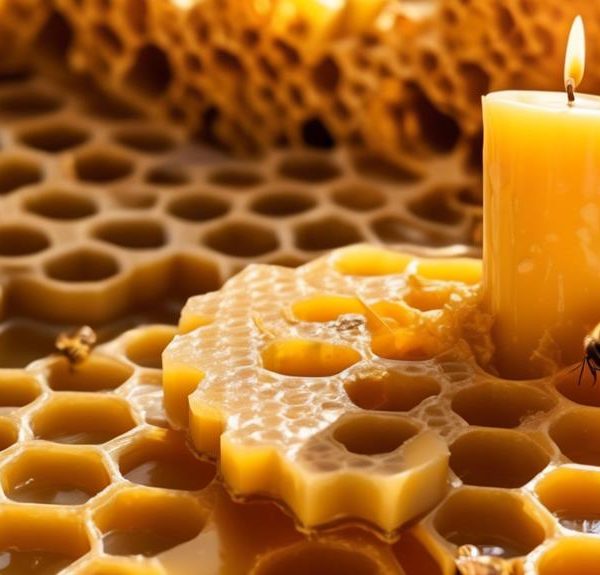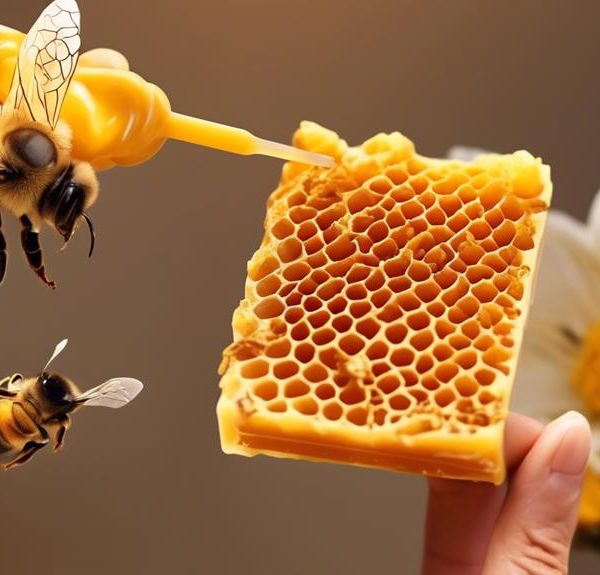Hive to home, discover the intricate journey of beeswax and its transformation into everyday products.
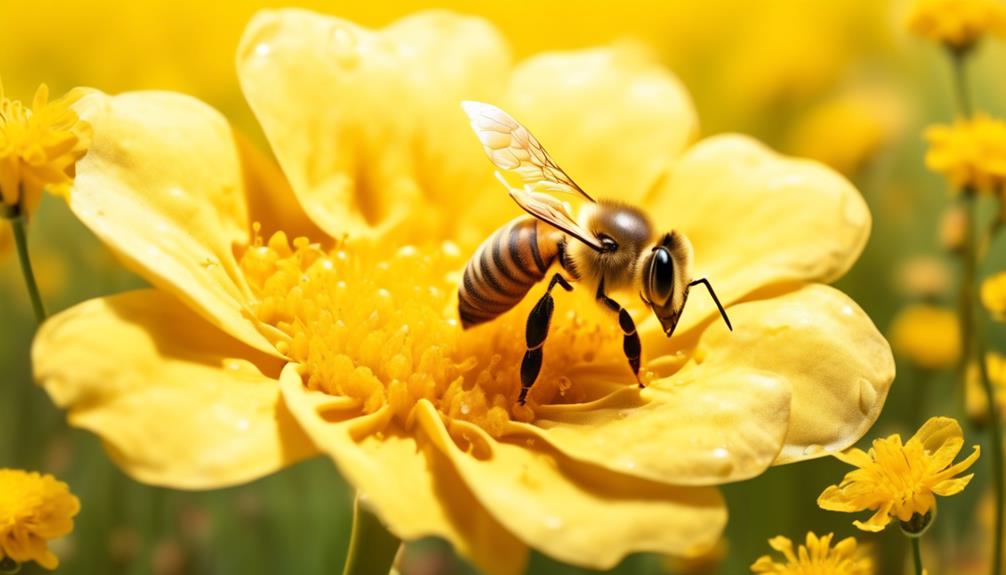
Where Is Beeswax From?
Just as Winnie the Pooh was drawn to the tempting allure of honey, you too might find yourself intrigued by the mysterious origin of beeswax.
You've likely encountered this versatile substance in a variety of places – from the cosmetics counter to the candle aisle – but have you ever stopped to wonder where it actually comes from?
The answer isn't as simple as pointing to a beehive. There's an intricate process involved, a delicate dance between nature and industry that transforms the fruits of a bee's labor into the beeswax products you use every day.
Stick around if you're curious to know more about this fascinating journey.
Key Takeaways
- Beeswax is produced by bees in their wax-producing glands on their abdomen.
- The color of beeswax depends on the flowers the bees consume and the cleanliness of the hive.
- Beeswax is harvested from beehives by separating it from honey and caps and then melting and filtering it.
- Beeswax has various commercial uses in industries such as cosmetics, pharmaceuticals, confectionery, and cheese production.
The Production Process of Beeswax
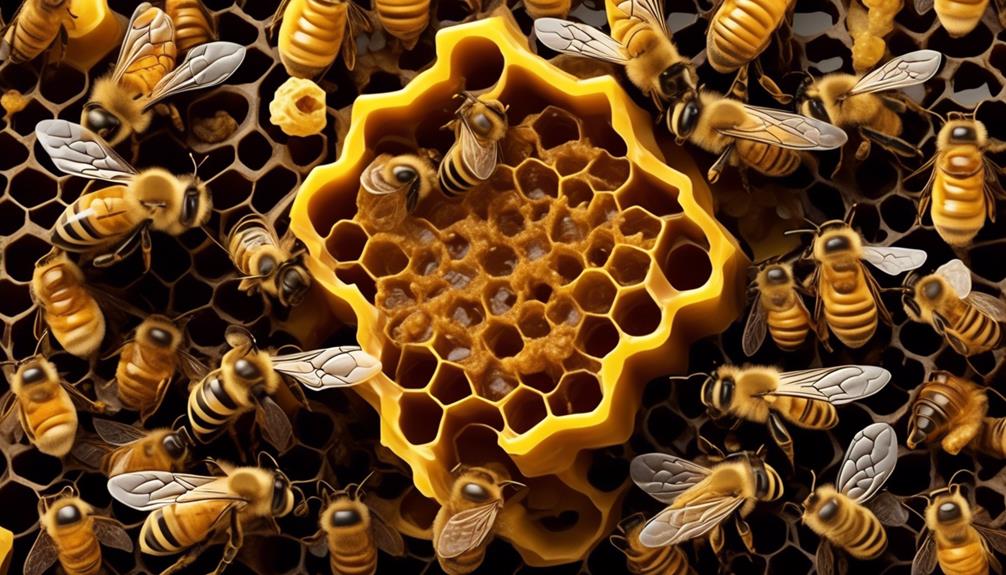
To understand the production of beeswax, you must first observe the diligent worker bees inside a hive, who are responsible for generating this natural substance. These hardworking insects have eight wax-producing glands on their abdomen that excrete liquid wax when they consume honey. Once exposed to air, the wax hardens and becomes a flake or scale.
You'd be amazed to know that it takes a lot of effort from the bees to produce a small amount of wax. In fact, it's estimated that bees must consume between six and eight pounds of honey to make just one pound of wax!
Once the wax flakes are produced, bees use their mandibles to shape and mold the wax into hexagonal cells, creating a honeycomb structure. This structure isn't only used to store honey, but also to house their larvae.
The color of the beeswax depends on the type of flowers the bees have been foraging on, as well as the cleanliness of the wax. The wax is initially transparent, but it becomes opaque after mastication and contamination with pollen.
Beehive: The Primary Source
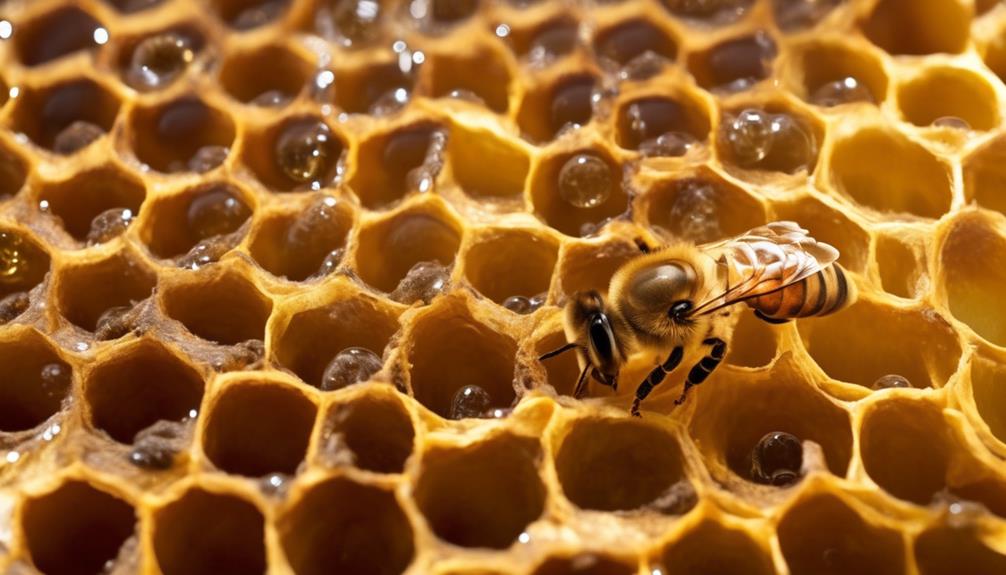
Building on our understanding of beeswax production, let's examine the beehive itself, the primary source and crucial environment where this fascinating process takes place. A beehive isn't just a collection of hexagonal cells; it's a complex, meticulously designed structure that serves multiple functions.
Within the hive, bees produce wax to build cells for honey storage and brood rearing. Worker bees have special glands that secrete beeswax, which hardens upon contact with air and is then manipulated by the bees into the hexagonal shape that characterizes a beehive.
It's worth noting that beeswax production isn't constant. It's largely dependent on the availability of nectar, the primary food source for bees. When nectar is plentiful, bees produce more wax, enabling the colony to expand. However, during times of scarcity, wax production slows down, conserving resources.
The beehive's structure also plays a role in temperature regulation, protecting the colony from extreme temperatures. This is crucial as beeswax melts at relatively low temperatures.
Journey From Hive to Market

Once the bees have meticulously produced and shaped the wax within the hive, it's your job as a beekeeper to harvest this valuable resource and prepare it for the market. This process begins with the removal of the honeycombs from the hive. You'll scrape off the honey and the beeswax caps, preserving the latter for further processing.
The beeswax is then melted down in a solar wax melter or a double boiler, ensuring that any impurities rise to the top and can be easily skimmed off.
Challenges don't end here: you'll need to filter the wax multiple times to remove any remaining debris. Using a fine mesh strainer or cheesecloth, you'll get rid of any leftover particulates.
The wax is then poured into molds and left to harden. Once hardened, the beeswax is ready for the market. Its applications are diverse: from candle making, to cosmetics, to furniture polish, beeswax is highly sought after.
As a beekeeper, it's your responsibility to sustainably manage this process, ensuring the health of your bees while providing a high-quality product for consumers.
Commercial Uses of Beeswax
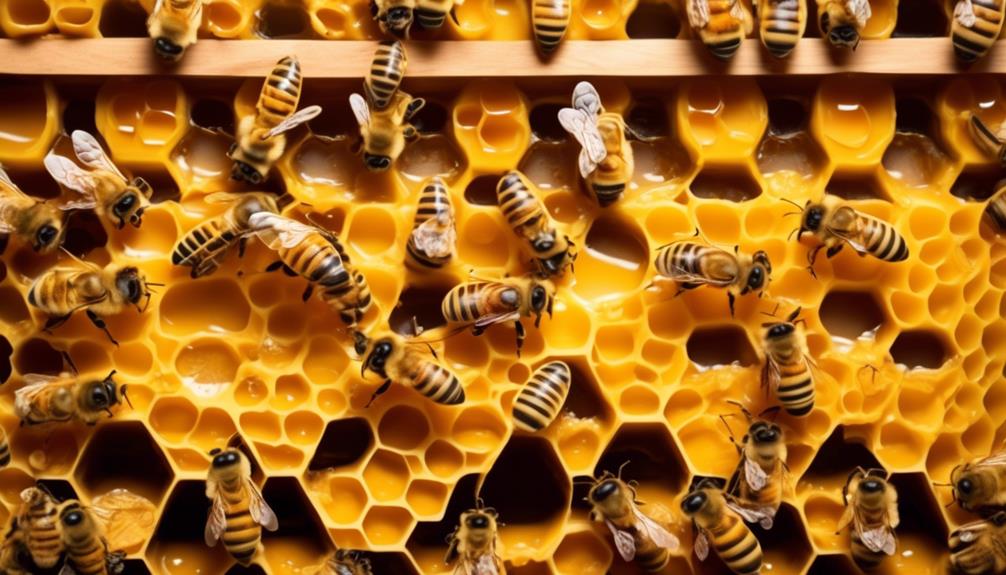
Having navigated the journey from hive to market, you'll find the applications for your carefully harvested beeswax are as diverse as they're abundant in the commercial world.
One of the most common uses is in the cosmetics industry. Here, beeswax acts as a thickening agent, emulsifier, and humectant. It's a vital ingredient in lip balms, lotions, and mascaras, where it helps to seal moisture and creates a waterproof barrier on the skin.
In the pharmaceutical industry, beeswax is utilized in the formulation of various ointments and tablets, offering its unique properties of consistency and moldability. It's also a key component in dental impression wax, helping dentists to capture the structure of a patient's teeth.
Moreover, beeswax is extensively used in the food industry. It forms a protective coating on cheese, preventing it from drying out and extending its shelf life. Similarly, it's used in the production of confectionery for its gloss and anti-sticking properties.
Sustainability and Beeswax Harvesting
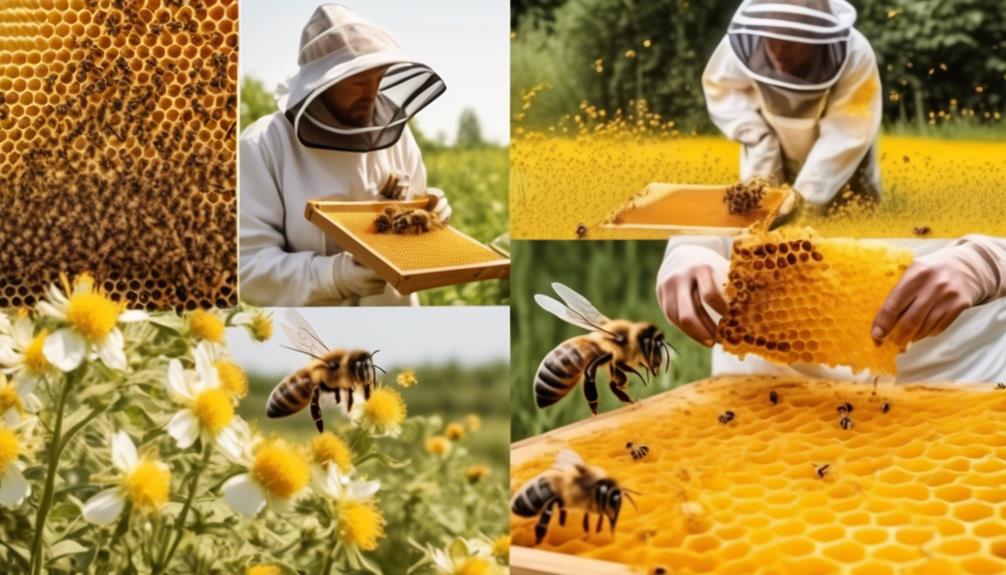
In the realm of beeswax harvesting, sustainability is a crucial factor you can't afford to overlook. Beeswax, a byproduct of the honey production process, is a renewable resource. However, overharvesting can destabilize the hive's ecosystem and negatively impact bee populations. Thus, it's vital to maintain a balance to ensure both the health of the bees and the continuation of beeswax production.
The process starts with honey extraction from the honeycombs. The beeswax cappings are then removed and melted down to form blocks. But here's the catch – bees need honey for their survival, especially during winter. If too much honey is harvested, the bees could starve, causing a decline in the population.
Sustainable practices involve leaving enough honey for the bees, ensuring they've plenty of native plants for forage, and avoiding the use of harmful pesticides. Beekeepers also monitor hives for diseases, which can rapidly decimate bee populations if left untreated.
Frequently Asked Questions
Is Beeswax Safe for People With Bee Allergies?"
Yes, you can safely use beeswax even if you're allergic to bee stings. The allergy is caused by venom, not the wax.
Beeswax is a byproduct of honey production and doesn't contain any bee venom.
However, it's always a good idea to patch test any new product on a small area of skin first, just to be sure you don't have an unexpected reaction.
It's also best to consult with your doctor if you're uncertain.
How Does the Quality of Beeswax Vary From One Region to Another?"
The quality of beeswax can vary greatly depending on the region. Factors like climate, the types of flowers available for bees, and the beekeeping practices can all impact the quality.
For instance, harsh weather conditions might stress bees, affecting the quality of their wax. Similarly, if bees are foraging on pesticide-laden flowers, it'll likely contaminate the wax.
Can Beeswax Be Used in Vegan Products?"
You're likely aware that beeswax comes from bees, a non-plant source. Therefore, it's not considered vegan. Bees produce beeswax to build their hives. Harvesting it often disrupts the bees and their habitat, which goes against the principles of veganism.
However, there are plant-based alternatives to beeswax you can use in your products, such as candelilla or carnauba wax. It's important to carefully review product labels to ensure they align with your vegan lifestyle.
What Is the Nutritional Value of Beeswax?"
You're wondering about the nutritional value of beeswax. Interestingly, it's not digestible for humans, hence it doesn't provide any direct nutritional benefits.
However, beeswax's anti-inflammatory and antioxidant properties can potentially support overall health. It's often mixed with other ingredients in dietary supplements for this reason.
But remember, always consult a healthcare professional before starting any new supplement regimen.
What Are the Possible Adverse Effects of Using Beeswax on the Skin?"
You might experience some adverse effects when using beeswax on your skin. Although it's usually safe, you could have an allergic reaction, causing redness, hives, or itching. If you have sensitive skin, beeswax might cause breakouts or irritation. Always do a patch test before full usage.
Also, beeswax can block pores, potentially leading to acne. Keep in mind, it's not a moisturizer but a sealant, so it might dry out your skin over time.
Conclusion
So, you've journeyed from the hive to the market, understanding beeswax's origin and uses.
It's a natural product made by bees in their hives, harvested sustainably, and used widely in commercial products.
With its numerous applications and eco-friendly production process, beeswax isn't just beneficial for bees, but for us too.
So, next time you see a beeswax product, you'll know exactly where it comes from and the journey it's been on.

